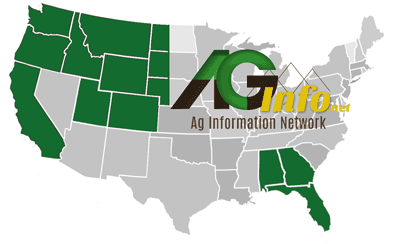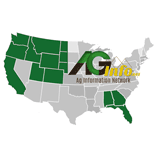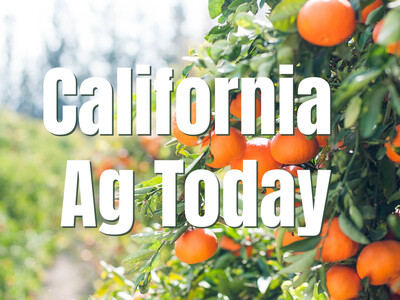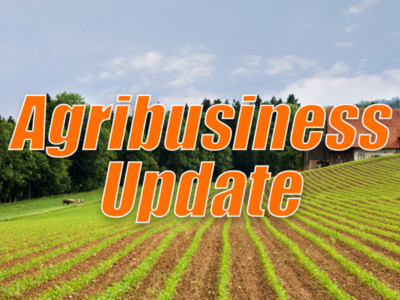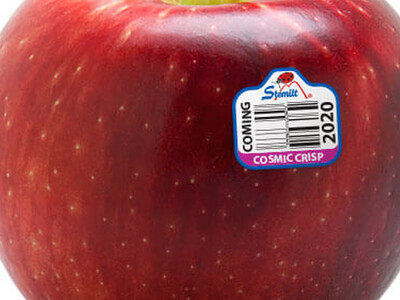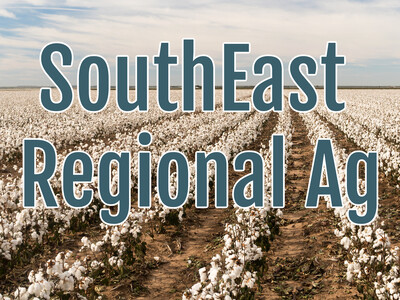Quagga wars continue
In 2023 an infestation of quagga mussels was found in the Snake River near Twin Falls. The Idaho Department of Agriculture treated the invasive species in the fall of 2023 and 2024. Now they’re back once again.“This is, as you know, the third year, the third treatment we've done here in the Snake River for infestation of quagga mussels. The impacts of quagga mussels obviously can be very severe,” said Lloyd Knight, Deputy Diretor of the Idaho state Department of Agriculture.
“It can cost the everyday consumer and taxpayer quite a bit of money to deal with that, and so the short-term pain of a treatment, we hope bears out in a long-term gain and not having those negative impacts on us as a state. It's really been a statewide effort to make this happen. There's a lot of folks that have put a lot of blood, sweat and tears into it,” said Knight.
“Quagga mussel is one of the most damaging, ecosystem damaging organisms that's out there for aquatic environments, in that it's a non-native species to the US,” said Jeremey Varley, Chief Treatment Engineer for the ISDA.
“It is a rapidly reproducing organism. A single breeding pair can produce over a million viable offspring in a single year. They change the dynamic of the water itself. They can crash fisheries just by that food chain upsetting aspect of quagga. It also has a bio fouler, so it has, Bissell threads or tiny hairs that it uses to attach to substrates and surfaces. So whether that's naturally occurring rocks or like the hydro dam facility down downstream, it can affect all of that as well as irrigation or drinking water infrastructure, things of that nature,” said Varley.
“This is the last major watershed in North America being the Snake River and the greater Columbia River Basin that is not fully infested with quagga mussels,” said Nic Zurfluh, Bureau Chief of Invasive Species at ISDA.
“And there is still very much an opportunity to not just contain it here, which we've accomplished, let alone reducing the size of the impact area, but really being aggressive to the point of eradication, and there are other states like Oregon, Washington that are watching this project very carefully. They're learning from us,” said Zurfluh.
”So, the treatment that we're doing is we're trying to eradicate the quagga mussel through the utilization of a molluscicide “Natrix” which is chelated copper that affects the gills of the mollusk and helps you eradicate those species,” said Varley.
“What we're trying to do is introduce it at a one part per million rate to the Snake River in a way that gets that copper bio available to them. So they uptake that over a duration of 200 hours, so then they take it and take the lethal amount and then expire. And that's what we're trying to do here is just make sure that we're getting that proper amount of copper within this reach of the river, and make sure that it gets to all the nooks and crannies throughout the system,” said Varley.
Because of the success of the treatments in previous years, they’ve reduced the area of the river they’re treating this year by 51%. So important to agriculture, sportsmen and Idaho’s overall economy.
”Due to our reduction in the size of the population and the area of infestation has been reduced roughly in half, we’re only treating Shoshone upstream to Twin Falls, or the Twin Falls Reservoir and the Shoshone Falls reservoir. Roughly half the size,” said Zurfluh.
“One of the most critical aspects in achieving our desired concentration is really monitoring. From surface samples to edge samples to deep hole samples, our ability to monitor the bioavailable copper concentration is absolutely key. Because that is what the quagga are exposed to,” said Dr. West Bishop, a scientist with the SePRO Corporation.
That includes getting samples at various depths of the river with special sampling devices.
“We can lower it down with the rope at specific depth intervals, because we want to make sure that we're getting the correct target rates at not just the top, but the middle and the bottom,” Zurfluh.
”This reading here you see 0.96, so just slightly below our 1.00 milligram copper per liter. This is 4-hundreths low, but this is still within an acceptable margin of our target that would still achieve control with the exposure duration outline” said Bishop.
“We also are utilizing this year our own bureau of labs within the agency. The Idaho Food Quality Assurance Lab and our Feed and Fertilizer Chemistry Lab are both co-located at the FQAL building on the CSI campus. We're utilizing that lab facility for analyzing our sampling that we do every day to try to get everything dialed in on the copper treatment. So, we're utilizing the chemistry lab. We're also now utilizing our own lab staff and equipment in the analyzing veliger samples,” said Knight.
“Being very thorough with everything, making sure we're not missing any steps, but finding what we need to find,” said Osana Moad, a m Microbiologist at the ISDA.
“This is a veliger, you can tell that here’s the tissue or velum protruding and all those little hairs are called cilia, and so you can see it's moving. It's very active, and very much alive,” said ISDA microbiologist Michelle Jakaitis.
“And so in contrast, ever since we have started treatment, we have seen very, very few villagers and so far they have all been dead, which is exactly what we expect. The treatment is working,” said Jakaitis.
Unfortunately, Natrix is also toxic to many fish and other aquatic life. According to a U.S. Geological Survey study as well as Idaho Fish and Game, there was a very high mortality rate for many native fish and other aquatic life in the area from the previous year’s treatments. But if left unchecked, the quagga infestation could have been even more devastating for the native ecosystems.
”We knew going into this that we were going to see some take of some of the native species,” said Varley. “But it’s something that we've worked very, very closely with our Department of Fish and Game to make sure that we understand how many fish are in the in the system, what that anticipated take level is and then also eventually what's that restock rate going to look like for putting it back in the system.”
“You know, this is one of those classic cases where there's a cost to treatment, and there's a cost to not doing treatment,” said Knight. “We still believe, as do the stakeholders that we work with in the water user community and agriculture, municipalities, power generation, I think everyone still believes and have communicated to the legislature and the governor that this is something that they believe is worth the cost. That certainly the costs of having an infestation go unchecked and not be eradicated, certainly that cost is higher than the cost, fiscal or otherwise, to making that effort to eradicate it. And we've heard that loud and clear, which is why we put the kind of effort together that we do,” said Knight.
The estimated cost is in the 2 1/2 to $3,000,000 range for the treatment.
They’ve also had a very active quarantines in place, sometimes closing access to parts of the river, as well as requiring boat washing in and out of this section of river to make sure the infestation isn’t spread to other parts of the state.
“Our goal is to not have to come do it again. And we're throwing, you know, every idea, every technology, every effort that we can at trying to make this a successful eradication treatment. We see that glimmer of hope because we've reduced that infested area by half, but certainly we got to keep our pedal to the floor and keep working at making sure this is successful,”said Knight.
“If we can protect Idaho's waters and keep them safe for all the myriad of uses that Idaho water receives from irrigation, agriculture, drinking water, recreation, you know, Idaho's a state of water, and if we can protect those by protecting this initial infestation and getting and eliminating this initial infestation of quagga mussels, it will make Idaho stand out in a way that we've protected Idaho's water for future generations and for future enjoyment,” said Varley.
